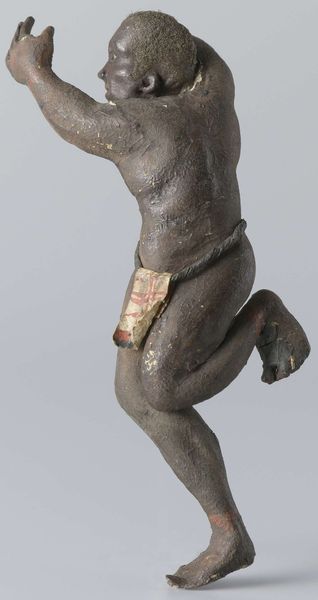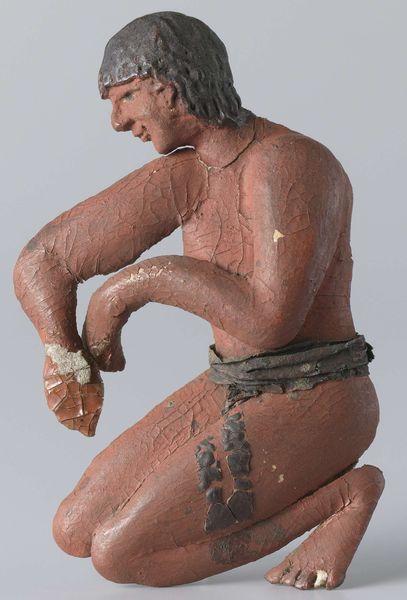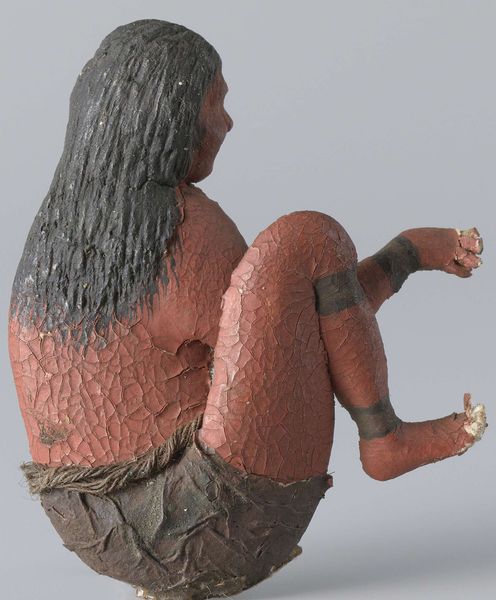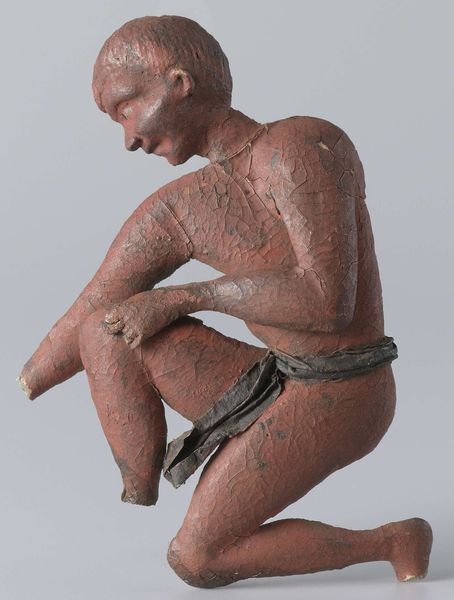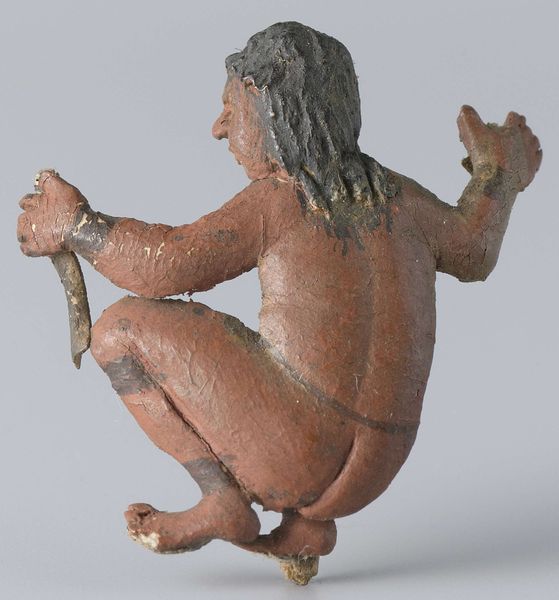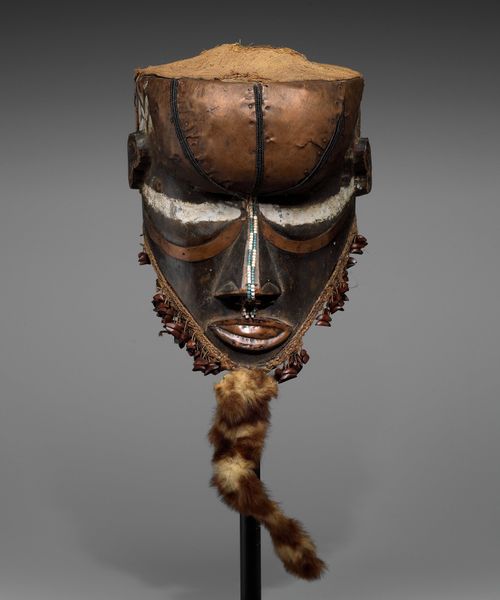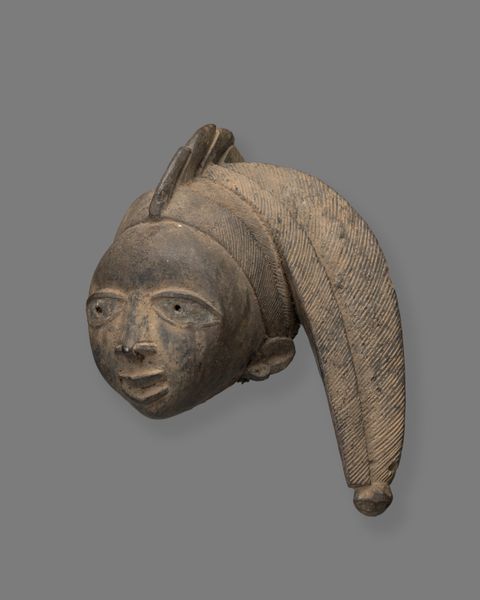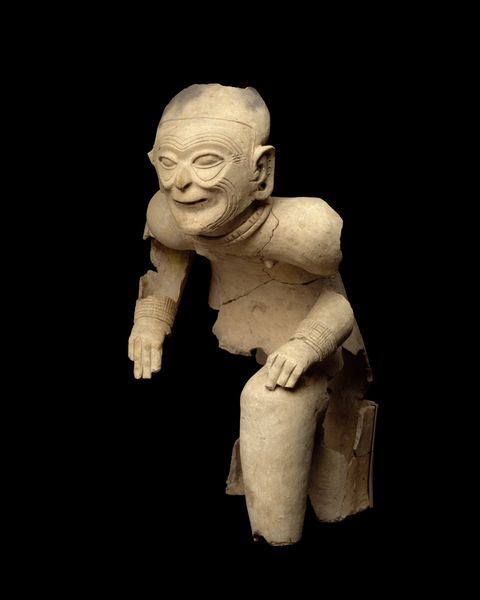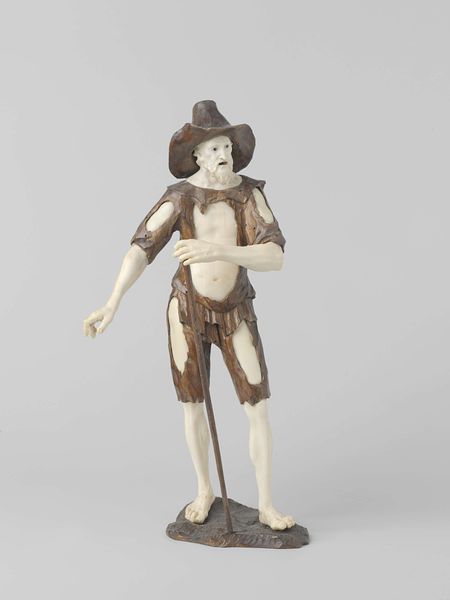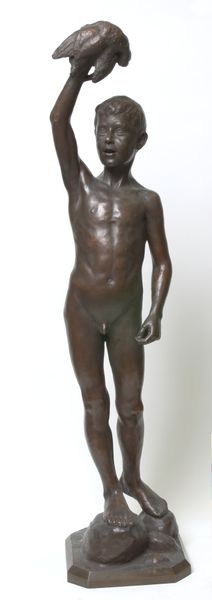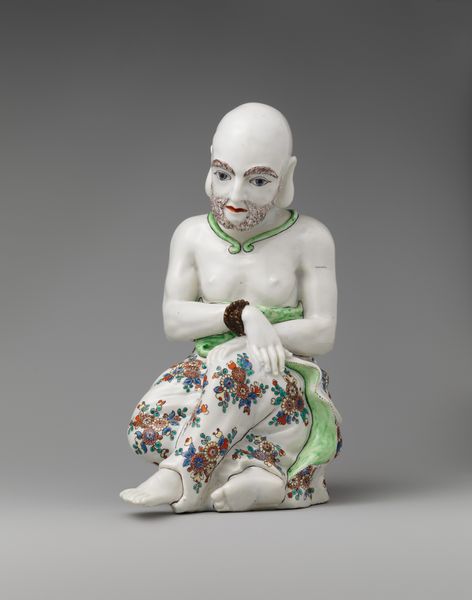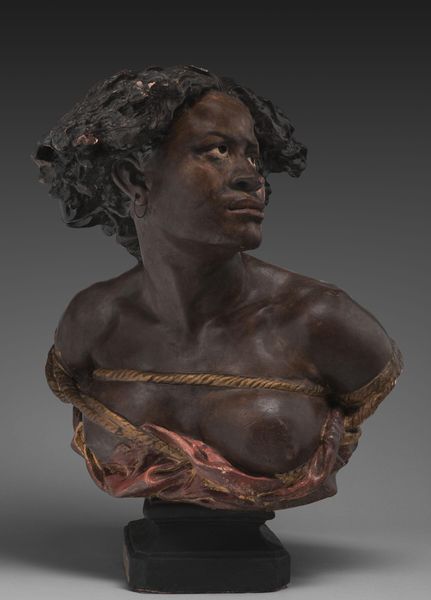
#
possibly oil pastel
#
male portrait
#
portrait reference
#
portrait head and shoulder
#
animal portrait
#
animal drawing portrait
#
portrait drawing
#
facial portrait
#
self portrait
#
digital portrait
Dimensions: height 9.3 cm, width 4.5 cm
Copyright: Rijks Museum: Open Domain
Curator: Isn’t she striking? She looks as if she’s been caught mid-stride. Editor: She definitely has presence! She also seems burdened by the weight of time... or history, perhaps? There’s something powerfully grave in her posture. This is Gerrit Schouten's “Standing Arawak” a work from before 1839, that appears to depict a woman of the Arawak people of Suriname. Curator: Burdened, yes, but also strong! Look at the detail of her tattoos. And the textures of her clothing. I sense a fierce pride radiating from her, despite... everything. There’s a stillness that almost feels protective, like she carries stories not yet ready to be told. I wonder, what were her days like? What did she see, feel, believe? Editor: Exactly! These colonial-era depictions are complex documents. On one hand, they represent efforts at documentation of indigenous peoples and cultures but, inevitably, they're filtered through the colonial lens. I always try to understand the intentions of the artist and the socio-political context within which they were produced and displayed. How was she perceived then, and how is she viewed now? Who controls the narrative, then and now? Curator: That's the key, isn't it? These aren't neutral images. I struggle with whether it's our right to impose these kinds of external readings onto this figure, even if they do aim toward correction or restoration. Editor: It's a balancing act, I think, between respectful appreciation and critical inquiry. We must accept its complexities. Her representation says so much about power structures of the time, even if Schouten was well-meaning in his attempts to document this woman. What kind of role would his artwork played for example in Colonial exhibitions? Curator: It definitely provides insights, though maybe unintentionally, into a troubled past, a testament to resilience, I see an incredible legacy of existence and resistance, written in ink on her very skin. Editor: Right. We must continue to revisit it from our current socio-political landscape, to spark ongoing conversation.
Comments
No comments
Be the first to comment and join the conversation on the ultimate creative platform.
